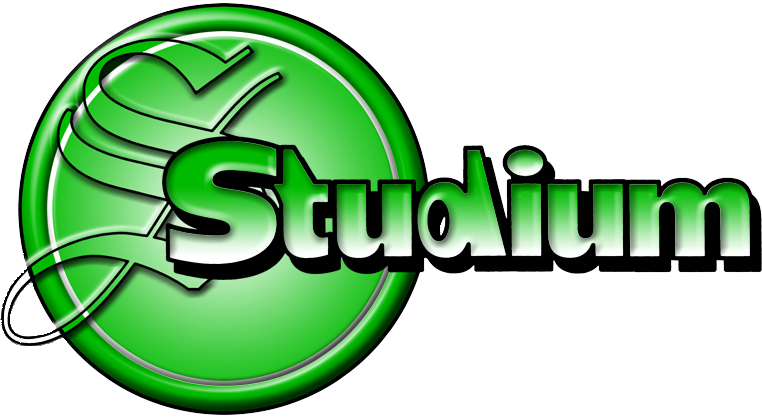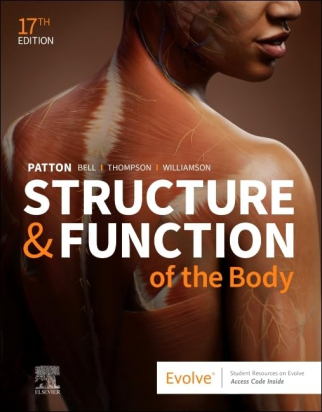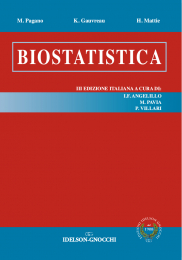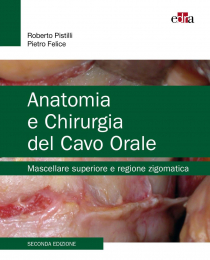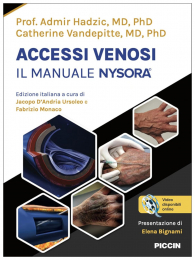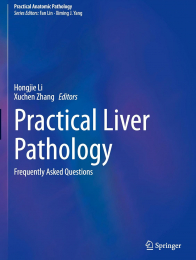Non ci sono recensioni
DA SCONTARE
| Gain a solid foundation in A&P with this easy-to-understand text! Clear and straightforward, Structure & Function of the Body, 17th Edition introduces the typical structure and function of the human body and describes what the body does to maintain homeostasis. The book shows how structure fits function, using clinical examples to reinforce A&P concepts and featuring hundreds of photos and micrographs for realistic visual detail. Written by a team of experts led by Kevin Patton, this text includes an Evolve website packed with animations, audio pronunciations, review questions, and other interactive learning resources. |
| Features: |
|
1 Introduction to the Body
Scientific Method
Levels of Organization
Anatomical Position
Anatomical Directions
Directional Terms
Anatomical Compass Rosette
Planes of the Body
Body Cavities
Dorsal Cavities
Ventral Cavities
Body Regions
Balance of Body Functions
Homeostasis
Feedback Control
Negative Feedback
Positive Feedback
Healthy Fluctuations
Human Microbiome
2 Chemistry of Life
Levels of Chemical Organization
Atoms
Elements and Compounds
Chemical Bonding
Ionic Bonds
Covalent Bonds
Hydrogen Bonds
Inorganic Chemistry
Water
Acids, Bases, and Salts
Organic Chemistry
Types of Organic Compounds
Carbohydrates
Lipids
Proteins
Nucleic Acids
Chemistry in the Human Body
3 Cells
Overview of Cells
Size and Shape
Composition
Parts of the Cell
Plasma Membrane
Cytoplasm
Cell Extensions
Nucleus
Relationship of Cell Structure and Function
Movement of Substances Through Cell Membranes
Types of Membrane Transport
Passive Transport Processes
Active Transport Processes
Cell Growth and Reproduction
Cell Growth
Cell Reproduction
4 Tissues
Introduction to Tissues
Tissue Types
Matrix
Epithelial Tissue
Introduction to Epithelial Tissue
Squamous Epithelium
Cuboidal Epithelium
Columnar Epithelium
Pseudostratified Epithelium
Transitional Epithelium
Connective Tissue
Introduction to Connective Tissue
Fibrous Connective Tissue
Bone Tissue
Cartilage Tissue
Blood Tissue
Hematopoietic Tissue
Muscle Tissue
Introduction to Muscle Tissue
Skeletal Muscle Tissue
Cardiac Muscle Tissue
Smooth Muscle Tissue
Nervous Tissue
Tissues and the Whole Body
5 Organ Systems
Organ Systems of the Body
Integumentary System
Skeletal System
Muscular System
Nervous System
Endocrine System
Cardiovascular System
Lymphatic and Immune Systems
Respiratory System
Digestive System
Urinary System
Reproductive Systems
The Body as a Whole
Homeostasis
Applying Organ System Concepts
6 Skin & Membranes
Body Membranes
Classification of Membranes
Epithelial Membranes
Connective Tissue Membranes
Skin
Structure of the Skin
Hair, Nails, and Skin Receptors
Skin Glands
Functions of the Skin
Skin Cancer
Squamous Cell Carcinoma
Basal Cell Carcinoma
Melanoma
Kaposi Sarcoma
Burns
Classification of Burns
Estimating Body Surface Area
7 Skeletal System
Functions of the Skeletal System
Support
Protection
Movement
Storage
Hematopoiesis
Gross Structure of Bones
Bone Types
Structure of Long Bones
Structure of Flat Bones
Microscopic Structure of Bones
Bone Tissue Structure
Cartilage Tissue Structure
Bone Development
Making and Remodeling Bone
Endochondral Ossification
Intramembranous Ossification
Axial Skeleton
Skull
Hyoid Bone
Vertebral Column (Spine)
Thorax
Appendicular Skeleton
Upper Extremity
Lower Extremity
Skeletal Variations
Sex-Related Skeletal Differences
Age Differences
Environmental Factors
Joints
Articulation of Bones
Kinds of Joints
Synarthroses
Amphiarthroses
Diarthroses
8 Muscular System
Muscle Tissue
Skeletal Muscle
Cardiac Muscle
Smooth Muscle
Structure of Skeletal Muscle
Muscle Organs
Muscle Fibers
Functions of Skeletal Muscle
Movement
Posture
Heat Production
Fatigue
Role of Other Body Systems in Movement
Motor Unit
Muscle Stimulus
Types of Skeletal Muscle Contractions
Twitch and Tetanic Contractions
Isotonic Contraction
Isometric Contraction
Effects of Exercise on Skeletal Muscle
Movements Produced by Skeletal Muscle
Contractions
Angular Movements
Circular Movements
Special Movements
Skeletal Muscle Groups
Muscles of the Head and Neck
Muscles of the Upper Extremities
Muscles of the Trunk
Muscles That Move the Lower Extremities
9 Nervous System
Organization of the Nervous System
Cells of the Nervous System
Neurons
Glia
Nerves and Tracts
Nerve Signals
Reflex Arcs
Nerve Impulses
Synapses
Central Nervous System
Brain
Spinal Cord
Coverings and Fluid Spaces
Peripheral Nervous System
Cranial Nerves
Spinal Nerves
Autonomic Nervous System
Overview
Functional Anatomy
Autonomic Conduction Paths
Sympathetic Division
Parasympathetic Division
Autonomic Neurotransmitters
Autonomic Nervous System as a Whole
10 Senses
Classification of Senses
General Senses
Special Senses
Sensory Receptor Types
Sensory Pathways
General Senses
Distribution of General Sense Receptors
Modes of Sensation
Special Senses
Vision
Hearing and Equilibrium
Taste
Smell
Integration of Senses
11 Endocrine System
Endocrine Glands
Mechanisms of Hormone Action
Nonsteroid Hormones
Steroid Hormones
Regulation of Hormone Secretion
Negative Feedback
Positive Feedback
Levels of Regulation
Prostaglandins
Pituitary Gland
Structure of the Pituitary Gland
Anterior Pituitary Gland Hormones
Posterior Pituitary Gland Hormones
Hypothalamus
Thyroid Gland
Thyroid Hormone
Calcitonin
Parathyroid Glands
Adrenal Glands
Location of Adrenal Glands
Adrenal Cortex
Adrenal Medulla
Pancreatic Islets
Sex Glands
Ovaries
Testes
Thymus
Placenta
Pineal Gland
Endocrine Functions Throughout the Body
Other Endocrine Tissues
Hormone Actions in Every Organ
12 Blood
Blood Composition
Blood Tissue
Blood Plasma
Formed Elements
Hematopoiesis
Red Blood Cells
RBC Structure and Function
RBC Count
Hemoglobin
Anemia
Blood Types
White Blood Cells
Introduction to WBCs
WBC Count
WBC Types
WBC Conditions
Platelets and Blood Clotting
Platelets
Blood Clotting
Atypical Blood Clots
13 Cardiovascular System
Heart
Location, Size, and Position
Functional Anatomy
Heart Sounds
Blood Flow Through the Heart
Blood Supply to Heart Muscle
Cardiac Cycle
Electrical Activity of the Heart
Cardiac Output
Blood Vessels
Types
Structure
Functions
Routes of Circulation
Systemic and Pulmonary Routes of Circulation
Hepatic Portal Circulation
Fetal Circulation
Hemodynamics
Defining Blood Pressure
Factors That Influence Blood Pressure
Fluctuations in Arterial Blood Pressure
Central Venous Blood Pressure
Pulse
14 Lymphatic System & Immunity
Lymphatic System
Organization of the Lymphatic System
Lymph
Lymphatic Vessels
Lymphoid Organs
Immune System
Function of the Immune System
Innate Immunity
Adaptive Immunity
Immune System Molecules
Cytokines
Antibodies
Complement
Immune System Cells
Phagocytes
Lymphocytes
15 Respiratory System
Structural Plan
Overview
Respiratory Tract
Respiratory Mucosa
Upper Respiratory Tract
Nose
Pharynx
Larynx
Lower Respiratory Tract
Trachea
Bronchial Tree
Alveoli
Lungs
Pleurae
Respiration
Pulmonary Ventilation
Mechanics of Breathing
Pulmonary Volumes
Regulation of Ventilation
Breathing Patterns
Gas Exchange and Transport
Pulmonary Gas Exchange
Systemic Gas Exchange
Blood Transportation of Gases
16 Digestive System
Overview of Digestion
Wall of the Digestive Tract
Wall Structure
Mucosa
Submucosa
Muscularis
Serosa
Mouth
Structure of Oral Cavity
Teeth
Salivary Glands
Pharynx
Structure
Function
Esophagus
Stomach
Structure
Function
Small Intestine
Structure
Function
Liver and Gallbladder
Structure
Function
Pancreas
Large Intestine
Structure
Function
Appendix
Peritoneum
Location
Extensions
Digestion
Overview of Digestion
Enzymes and Chemical Digestion
Carbohydrate Digestion
Protein Digestion
Fat Digestion
End Products of Digestion
Absorption
Mechanisms of Absorption
Surface Area and Absorption
17 Nutrition & Metabolism
Metabolic Function of the Liver
Macronutrients
Dietary Sources of Nutrients
Carbohydrate Metabolism
Fat Metabolism
Protein Metabolism
Micronutrients
Vitamins
Minerals
Regulating Food Intake
Metabolic Rates
Body Temperature
18 Urinary System
Kidneys
Location of the Kidneys
Gross Structure of the Kidney
Microscopic Structure of the Kidney
Overview of Kidney Function
Formation of Urine
Overview of Urine Formation
Filtration
Reabsorption
Secretion
Summary of Urine Formation
Control of Urine Volume
Antidiuretic Hormone
Aldosterone
Atrial Natriuretic Hormone
Atypical Urine Volume
Elimination of Urine
Ureters
Urinary Bladder
Urethra
Micturition
Atypical Urine Output
Urinalysis
19 Fluid & Electrolyte Balance
Body Fluid Volumes
Body Fluid Compartments
Concept of Fluid Compartments
Extracellular Fluid
Intracellular Fluid
Mechanisms That Maintain Fluid Balance
Overview of Fluid Balance
Regulation of Fluid Output
Regulation of Fluid Intake
Exchange of Fluids by Blood
Fluid Imbalances
Dehydration
Overhydration
Importance of Electrolytes in Body Fluids
Electrolytes and Nonelectrolytes
Ions
Electrolyte Functions
Electrolyte Imbalances
Homeostasis of Electrolytes
Sodium Imbalance
Potassium Imbalance
Calcium Imbalance
20 Acid-Base Balance
pH of Body Fluids
Using the pH Scale
The pH Unit
Mechanisms That Control pH of Body Fluids
Overview of pH Control Mechanisms
Integration of pH Control
Chemical pH Control Mechanisms
Physiological pH Control Mechanisms
pH Imbalances
Acidosis and Alkalosis
Metabolic and Respiratory Disturbances
Compensation for pH Imbalances
21 Reproductive Systems
Sexual Reproduction
Producing Offspring
Male and Female Systems
Male Reproductive System
Structural Plan
Testes
Reproductive Ducts
Accessory Glands
External Genitals
Female Reproductive System
Structural Plan
Ovaries
Reproductive Ducts
Accessory Glands
External Genitals
Menstrual Cycle
Summary of the Male and Female Reproductive
Systems
22 Growth, Development, & Aging
Prenatal Period
Fertilization to Implantation
Amniotic Cavity and Placenta
Periods of Development
Formation of the Primary Germ Layers
Histogenesis and Organogenesis
Birth Defects
Birth
Parturition
Stages of Labor
Multiple Births
Postnatal Period
Growth, Development, and Aging
Infancy
Childhood
Adolescence
Adulthood
Older Adulthood
Effects of Aging
Integumentary System
Skeletal System
Muscular System
Central Nervous System
Special Senses
Cardiovascular System
Respiratory System
Urinary System
Reproductive Systems
Appendices
A Body Mass Index
B Common Medical Abbreviations, Prefixes,
& Suffixes
C Chapter Test Answers
Glossary
Illustration/Photo Credits
